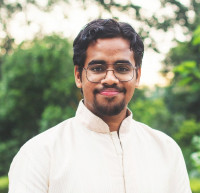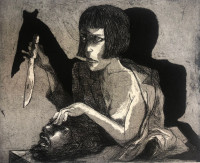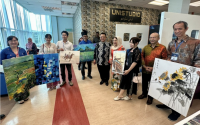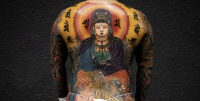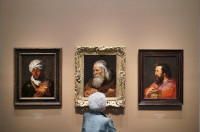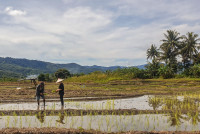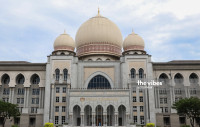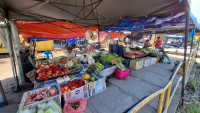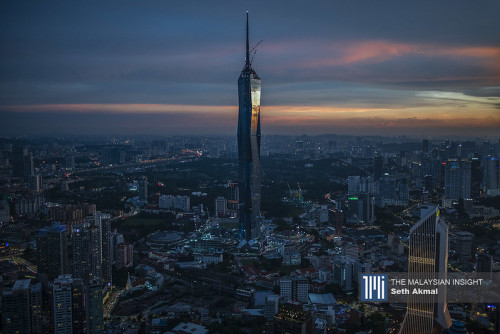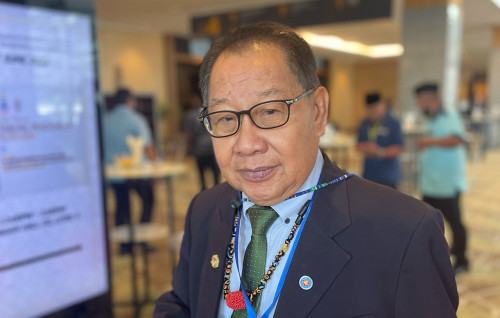“KAILASH, a mountain or a mystery based on faith. It is the abode of Shiva, home to Demchok, the Tibetan God of Bliss and considered the axis to the universe.”
So began Deepika Gupta in her remarks at the opening of 'Kailash Mansarovar: Glory and Conflict,' Sutra Foundation’s latest exhibition which runs until the 20th of October. In an interview with The Vibes, the artist spoke at length on her process, the mystical experiences she witnessed during her sojourn to Tibet, which formed the crux of this series, and the various elements she experimented with to bring it to life.
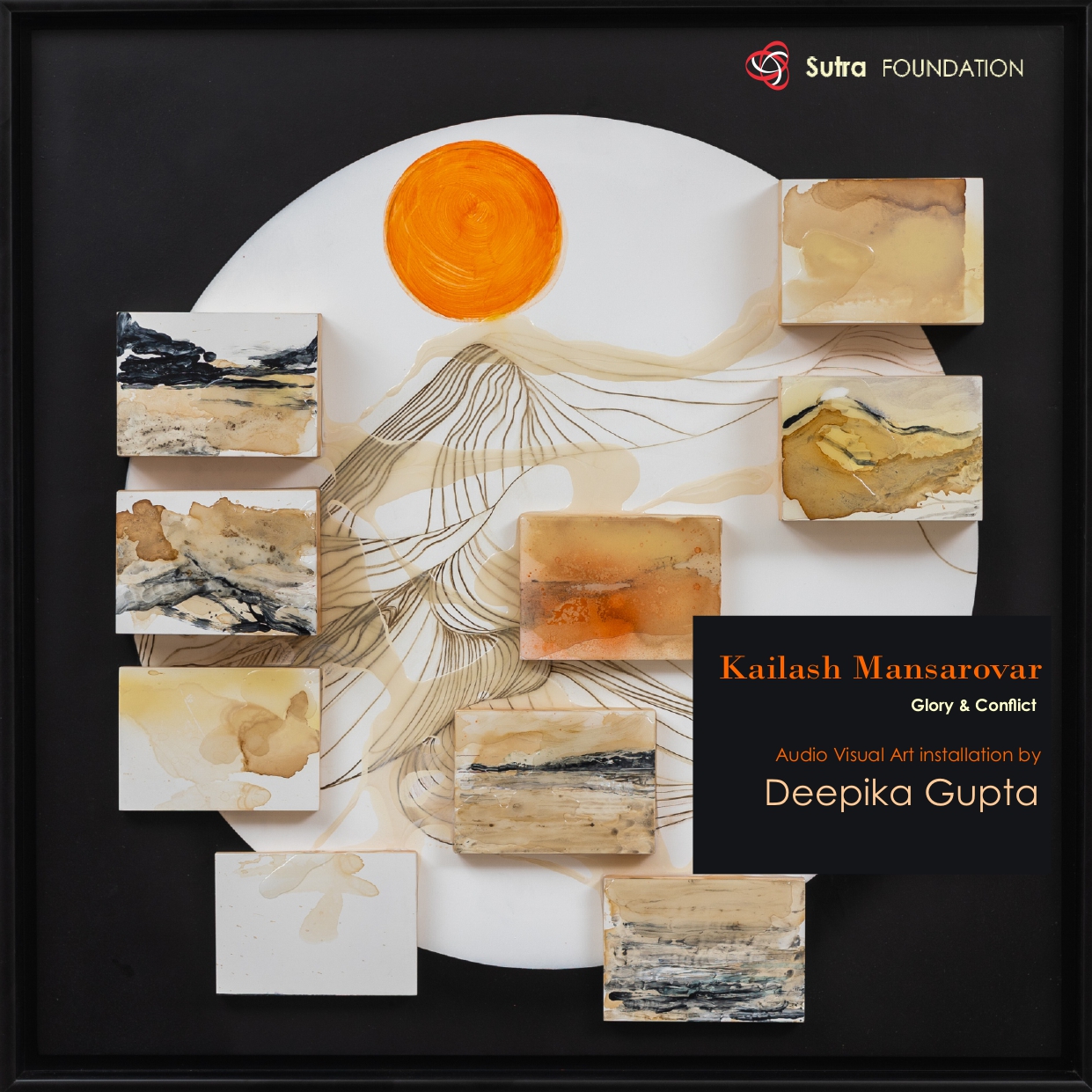
The Vibes (TV): How did the concept for ‘Kailash Mansarovar’ come to you? I understand you have made two trips to Kailash, and that served as primary inspiration. Could you talk a bit more about this?
Deepika Gupta (DG): When I first went to Kailash in 2018 with the Isha Foundation, I had no spiritual aspirations, just enthusiasm and a profound sense of adventure. I had no idea I would be travelling 1,200 km by road from Lhasa to the south face of Kailash. Barren, beautiful, vast Tibetan plateau with snowcapped mountains in the distance.
The trek by foot started from the south face of Mt Kailash, at a tiny 2-meter structure on the mountainside called Yam Dwar, often described as the doorway of the god of death. As I crossed Yam Dwar, and started my walk, tears started flowing uncontrollably. Something inside me broke open. It was like a floodgate.
I went to Kaliash Mansarovar as a trek, but the journey ended up being an adventure of a different kind. There was something mystical, an inexplicable energy that enveloped me. It was a feeling of complete surrender, beyond individual identity. I came back but could not get the experience of Kailash out of me.
So, in 2019 I went back to Kailash, compelled to validate what had happened to me. The mountains, the lakes, and the space flow with a formless energy. In the two years of Covid that followed and the time it gave for quiet reflection, I knew what I had experienced was beyond comprehension, beyond me. It was meant to be shared and I decided to share this in the way I know best – through art.
-1.jpg)
TV: In this series you worked with acrylic, oil, and resin but there is also an audio-visual extension or element to the artworks. Could you describe your process? Were these new grounds for you artistically? What compelled you to work using different mediums?
DG: Art is a flow. Art is not static. I let this flow take me forward as I work on each new body of work. I love to experiment with mediums. So far, beyond the traditional art tools, I have worked with glass, ceramic, wood, and fabric. My previous exhibition was of art to wear, an expression on sarees that exhibited at Ilham Gallery in 2017.
For this series, I needed to create multiple dimensions to bring forth the energy that I speak of. The touchscreen tablet that is part of each work was borne after much research and experimentation. It needed to be an element that blended and added to the work rather than a standalone piece.
Since there were no previous reference points, no earlier artistic attempts to draw inspiration from, it was even more exciting to figure out how to make this happen.
The resin is another new medium I tried. The resin plays a strong element in this series, which added a reflective surface to allow the viewer to be one with the work.
TV: Many of the pieces attempt to describe the spiritual, almost ephemeral energy you experienced during your excursions in Kailash. Was it challenging interpreting that into a physical format?
DG: I am most drawn to experiences. Experiences within and experiences around. My art draws upon human emotions, nature, and spiritual philosophy. I love being in nature. Whether it is the mountains or the deep sea.
These spaces make one feel small, yet so free. Whereas human emotions draw you inward. They bind you, tighter and tighter. Both are important. Both are meant to be expressed. The aim of my art is to touch the soul. Connect the viewer to the work in a way where you find yourself becoming a part of it.
The time spent locked up during the Covid years was difficult. Yet the hidden blessing it offered was the quiet reflective time and space. During the creation of this body of work, I isolated myself and minimised social contact. This reflective space was key to finding the way forward, in expressing this ephemeral energy in the most immersive way possible for the viewer. By adding a touchscreen tablet as the heart of each work.
.jpg)
TV: You did not shy away from politics. In ‘Prayer Flags,’ visuals of the people of Kailash and the famed mountain cuts through or rather forms the heart of the Chinese flag. What were sentiments on the ground like regarding the Tibet’s tenuous relationship with China?
DG: Somewhere along the way, while expressing the Glory of Mt Kailash, I started to think of the people. The people I came across during this journey. Their stories and perspective. The work expanded. They became ‘Kailash Mansarovar: Glory & Conflict.’ The second lot of works is an expression of human emotions and the power of prayer. The conflict that is internal and the conflict that each of us faces around us.
This inexplicable energy goes beyond being a pilgrimage. It is a common life force that flows through each of us, bringing us together as one. The 10 different works each tell their own unique story. The small blocks are the glimpses into this vast experience. The circle represents the infinite and the square around it is the boundaries that we all live in.
The audio-visual element is a combination of photos and videos taken along my journey. They too have hidden miracles in them. The voices that accompany are prayers, chants and poetry that attempts to recreate the experience.
The way we strengthen ourselves is by turning to prayer and who knows it better than the people of Tibet. – The Vibes, October 16, 2022




